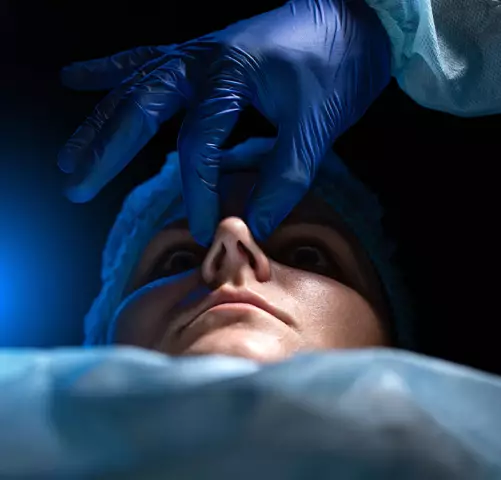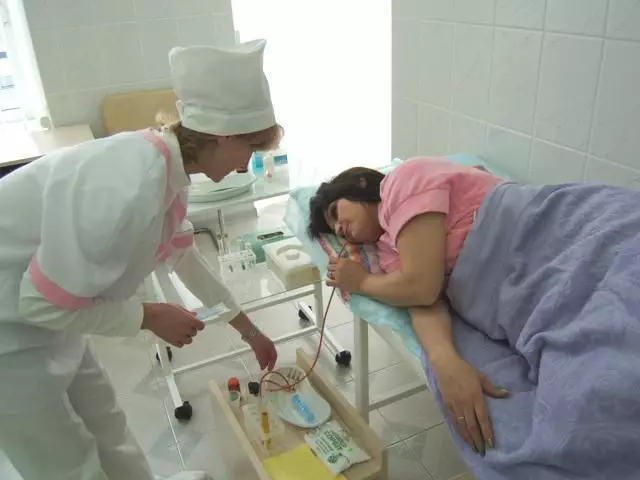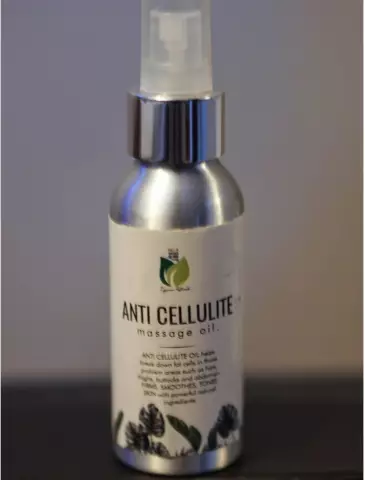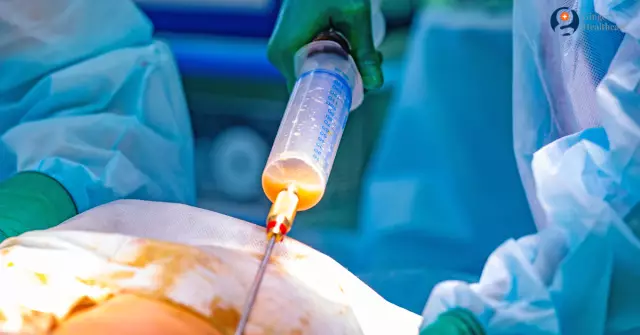- Author Rachel Wainwright [email protected].
- Public 2023-12-15 07:39.
- Last modified 2025-11-02 20:14.
Septoplasty

Septoplasty is an operation on a deformed nasal septum, the purpose of which is to correct its shape while preserving the cartilaginous and bone base.
The nasal septum is a bone-cartilaginous plate dividing the nasal cavity into two parts, at first glance, absolutely equal. But over time, it acquires a variety of bends and outgrowths ("ridges" and "thorns").
Many people experience injuries to the nose, as a result of which the cartilage or bone is displaced in one direction, thus various protrusions are formed. Also, the curvature of the nasal septum can occur as a result of a birth injury or already during the growth of the child, when the development of the facial skeleton is impaired.
Signs of deformation of the nasal septum, in which septoplasty is the only solution to the problem, may be as follows:
- Difficulty in nasal breathing;
- Snore;
- Chronic sinusitis, and in some cases sinusitis, frontal sinusitis, sphenoiditis, ethmoiditis;
- Frequent nosebleeds;
- Hearing impairment;
- Frequent respiratory illness.
Is septoplasty required
Having found one or more of these symptoms, a person should consult a qualified otorhinolaryngologist to establish an accurate diagnosis. If the deformation of the nasal septum is insignificant, which happens in 80% of people, most likely, treatment will be carried out without surgery.
Septoplasty is indicated only if the function of nasal breathing is impaired. Diagnostics is carried out using a rhinoscope, if necessary, an X-ray method is used.
In each case, the doctor, after examination and appropriate examination, will decide on the advisability of nasal septum septoplasty.
The operation itself consists in resection (excision) of the septum in order to improve nasal breathing. It can also be used to gain free access to the nasal cavity in the treatment of inflammation, polyps, tumors or nosebleeds.
Contraindications to septoplasty
The main contraindications for septoplasty are:
- Advanced age or illness of the patient, in which complications are possible after the use of anesthesia;
- The presence of diabetes mellitus or other diseases leading to bleeding disorders;
- The patient has infectious and oncological diseases;
- The presence of any disease in an acute form.
Septoplasty of the nasal septum
7 days before the planned operation, it is prohibited to take aspirin and other anti-inflammatory drugs, as well as drugs that help thin the blood. Women should take into account that this operation is not performed on the eve of menstruation, but only 7-10 days after it. In patients, a general blood test is taken, an ECG is done.
During septoplasty, general or local anesthesia is used. Food intake is stopped 12 hours before the introduction of anesthesia.
The operation lasts 1-2 hours and consists in excision of deformed cartilaginous areas. To preserve the integrity of the mucous membrane, it first exfoliates. Modern technologies for performing septoplasty make it possible to excise the minimum number of parts of the septum that prevent it from being installed in the correct vertical position. In some cases, the cartilage fragments are removed, thinned, and then repositioned.
Currently, using advanced techniques, nasal septum septoplasty is performed using special surgical equipment for minimally invasive surgery.
Endoscopic septoplasty
Endoscopic septoplasty allows the operation to involve a minimum amount of cartilage and tissue, which contributes to a good aesthetic result and significantly shortens the rehabilitation period.
This operation is carried out endosonally, while the skin of the face is not cut. An endoscope (tube with a diameter of 2.7 or 4 mm) with fiber optics inside is inserted through the nasal cavity, which allows the surgeon to see the patient's nose on the screen as if from the inside. Endoscopic septoplasty is performed with minimal trauma for the patient. At the end of the surgery, in order to avoid the mobility of the nasal septum, it is fixed with special plates (splints). Tampons are inserted into the nasal cavity, which also fix the septum and absorb bloody discharge. Tampons are removed after 24-72 hours, depending on the degree of bleeding. Patients have to breathe through the mouth before the tampons are removed.
Laser septoplasty
Laser septoplasty, according to medical practitioners, is today the most progressive and least traumatic way to correct problems with the nasal septum. It is interesting in that such an operation is carried out without blood loss and postoperative edema, since the laser, when cutting tissues, simultaneously "seals" the blood vessels. At the same time, it produces an antiseptic effect.
Laser septoplasty is not used for severe curvature of the septum.
Recovery period

After septoplasty, according to patients, tampons in the nose usually completely block breathing, you have to breathe through the mouth, this causes dry mouth, headache, watery eyes, and even fever. At this time, you should limit physical activity, do not drink hot drinks, do not take a hot bath or shower. To prevent a bacterial infection, the patient may be prescribed antibiotics, antipyretic and pain relievers. For a week after septoplasty, the nasal septum remains edematous, so it is difficult for the patient to breathe even after the tampons are removed. During the first 2-3 days after their removal, it is not recommended to blow your nose strongly, as this can lead to nosebleeds. The unpleasant phenomena disappear in 1-2 weeks. The patient is allowed to return to normal physical activity after septoplasty for about a month.
The importance of septoplasty is difficult to overestimate, because it is vital for a person to fully breathe through the nose, since his health depends on the quality of nasal breathing. In the nose, the air we breathe is warmed, humidified and purified before it enters the lungs. Scientists have proven that breathing through the mouth can cause an exacerbation of bronchial asthma, increase blood pressure, develop myocardial diseases and other diseases.
Found a mistake in the text? Select it and press Ctrl + Enter.






